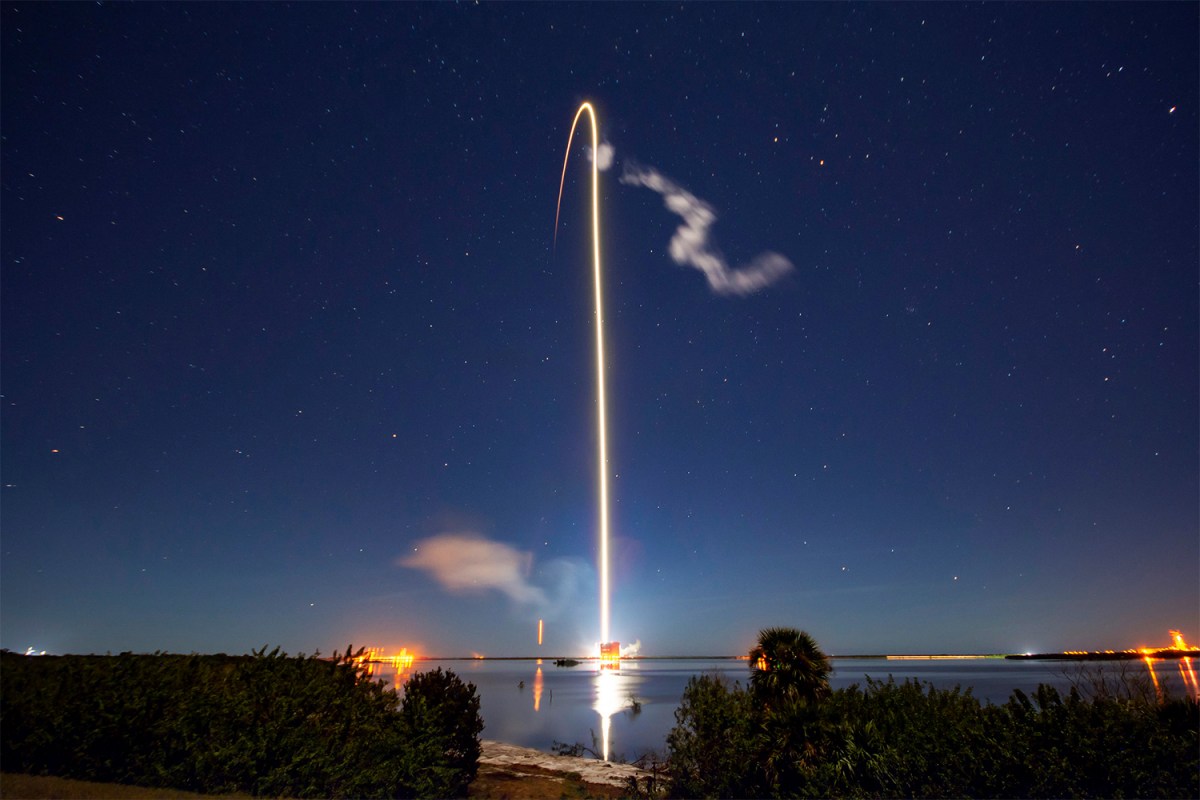If you see a train of lights chugging across the night sky, don’t sound the UFO alarm. It’s probably just Elon Musk’s satellites.
On Monday, aerospace company SpaceX, founded by Musk, completed its third official launch of Starlink satellites into orbit. In total, the company now claims about 180 active satellites currently orbiting Earth, which makes it “the largest commercial satellite constellation,” according to MIT Technology Review.
Watch video of the mission here:
What does it plan to do with said constellation? According to SpaceX, the Starlink network will eventually “deploy the world’s most advanced broadband internet system,” bringing “fast, reliable internet to locations where access has been unreliable, expensive, or completely unavailable.”
To fulfill this claim, SpaceX will need to launch many more satellites. How many, exactly? The company already has approval to launch 12,000 in total, is working on approving 30,000 more, and as SpaceX President Gwynne Shotwell said at the end of 2019, “Starting into the new year, you should see a [Starlink] mission every two-to-three weeks from us.”
That number of commercial satellites has some experts worried. Well, worried might be too mild a word — some astronomers see the highly visible satellites as a potential threat to “the science of astronomy itself.” SpaceX is attempting to appease them with a new “experimental darkening treatment” which it is testing on one satellite in the latest Starlink launch.
If all goes according to plan, expect another launch of up to 60 satellites later in January.
Subscribe here for our free daily newsletter.
Thanks for reading InsideHook. Sign up for our daily newsletter and be in the know.


















